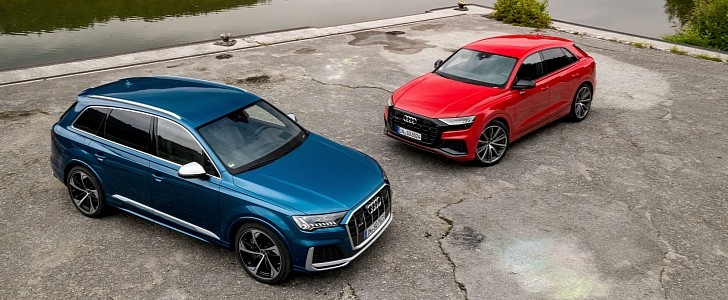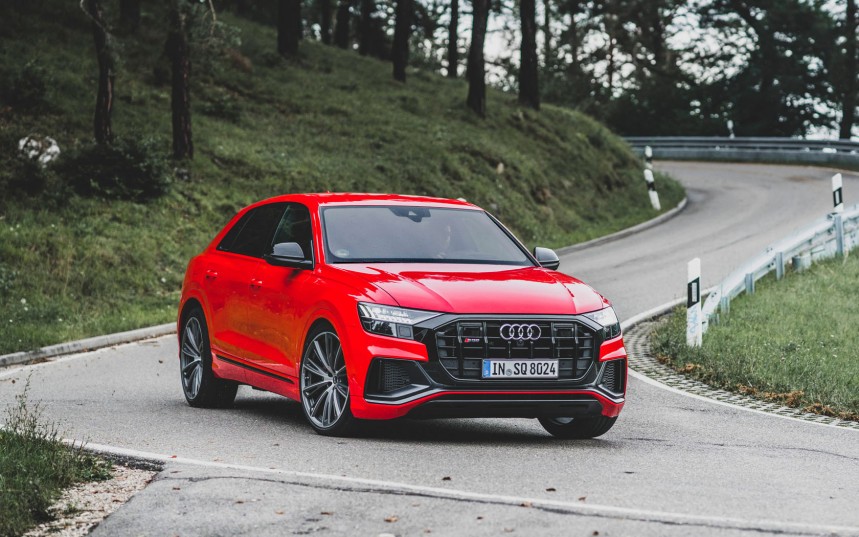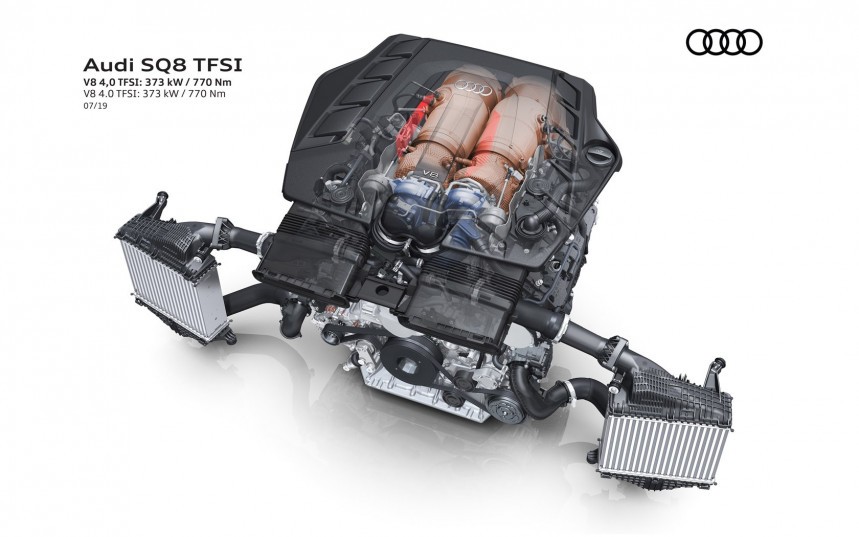The SUV has been rapidly gaining popularity over the last few decades for its practicality and comfort. But what can be better than a premium SUV like an Audi Q7 or Q8? A really fast S version of those vehicles powered by a twin-turbo TFSI V8 the likes of which we normally see on RS6 or RS7s.
The German carmaker released the Q7 in 2005, developing it under the Volkswagen Group umbrella along with the Porsche Cayenne and Volkswagen Touareg, to satisfy the increasing demand for premium SUVs.
The success of this model determined Audi to expand its range, and thirteen years after unveiling its first SUV it released the Q8, which became the range’s flagship model.
Although the first generation Q7 featured a twin-turbo 6.0-liter V12 diesel power unit capable of producing 493 hp (368kW; 500 PS), it was not a true S model.
The first of this kind was presented in 2016, a year after the second generation of the successful SUV was introduced. Three years later, the performance-focused SQ8 made its debut, powered by a 4.0-liter Biturbo V8 mild-hybrid diesel engine.
For the 2021 model year, Audi decided to finally ditch the diesel engines, which were mostly sold in Europe, and adopt a new gasoline TFSI V8 developed especially for the two SQ models.
The high-tech engine has a 4.0-liter displacement and features a lightweight aluminum engine block, inside of which we find cylinder barrels coated through plasma spraying with a layer of iron.
This innovative coating method reduces the amount of friction that leads to less wear and a decrease in fuel consumption.
To maximize efficiency when driving at moderate speeds, the cylinder on demand (COD) system temporarily deactivates four cylinders by switching off the fuel injection and ignition and closing the intake and exhaust valves.
When performance is what the driver is after, the intake and exhaust camshafts can be automatically adjusted to provide a precise valve overlap thus optimizing gas exchange in the combustion chamber.
The V8 TFSI features two win-scroll turbochargers that supply each cylinder bank with up to 1.5 bar of pressure and deliver harmonious power to the SQ7 and SQ8.
The cylinder heads are developed with the intake on the outside and the exhausted on the inside to make room for the turbochargers, which are placed in the 90-degree inner V of the engine. This layout was chosen to facilitate short gas paths between the outlet duct and the exhaust turbines.
The 1-3-7-2-6-5-4-8 ignition sequence gives the gorgeous V8 a beasty roar that is modulated by a flap placed in each tailpipe of the exhaust system.
The advanced 4.0-liter twin-turbo V8 TFSI spits out a solid 500 hp (373kW; 507 PS) and 770 Nm (568 lb.-ft) of torque that is constantly available from 2,000 to 4,000 rpm.
Both models can similarly utilize its power, being able to sprint from 0 to 100 kph (62 mph) in 4.1 seconds on route to a limited top speed of 250 kph (156 mph).
The Audi SQ7 TFSI and the SQ8 TFSI finally bring gasoline powered V8s to European streets and we could not be happier. Although the high-powered diesel engines were formidable, there is nothing like the beautiful sound of a sturdy gasoline twin-turbo V8.
The success of this model determined Audi to expand its range, and thirteen years after unveiling its first SUV it released the Q8, which became the range’s flagship model.
Although the first generation Q7 featured a twin-turbo 6.0-liter V12 diesel power unit capable of producing 493 hp (368kW; 500 PS), it was not a true S model.
The first of this kind was presented in 2016, a year after the second generation of the successful SUV was introduced. Three years later, the performance-focused SQ8 made its debut, powered by a 4.0-liter Biturbo V8 mild-hybrid diesel engine.
The high-tech engine has a 4.0-liter displacement and features a lightweight aluminum engine block, inside of which we find cylinder barrels coated through plasma spraying with a layer of iron.
This innovative coating method reduces the amount of friction that leads to less wear and a decrease in fuel consumption.
To maximize efficiency when driving at moderate speeds, the cylinder on demand (COD) system temporarily deactivates four cylinders by switching off the fuel injection and ignition and closing the intake and exhaust valves.
When performance is what the driver is after, the intake and exhaust camshafts can be automatically adjusted to provide a precise valve overlap thus optimizing gas exchange in the combustion chamber.
The V8 TFSI features two win-scroll turbochargers that supply each cylinder bank with up to 1.5 bar of pressure and deliver harmonious power to the SQ7 and SQ8.
The 1-3-7-2-6-5-4-8 ignition sequence gives the gorgeous V8 a beasty roar that is modulated by a flap placed in each tailpipe of the exhaust system.
The advanced 4.0-liter twin-turbo V8 TFSI spits out a solid 500 hp (373kW; 507 PS) and 770 Nm (568 lb.-ft) of torque that is constantly available from 2,000 to 4,000 rpm.
Both models can similarly utilize its power, being able to sprint from 0 to 100 kph (62 mph) in 4.1 seconds on route to a limited top speed of 250 kph (156 mph).
The Audi SQ7 TFSI and the SQ8 TFSI finally bring gasoline powered V8s to European streets and we could not be happier. Although the high-powered diesel engines were formidable, there is nothing like the beautiful sound of a sturdy gasoline twin-turbo V8.










